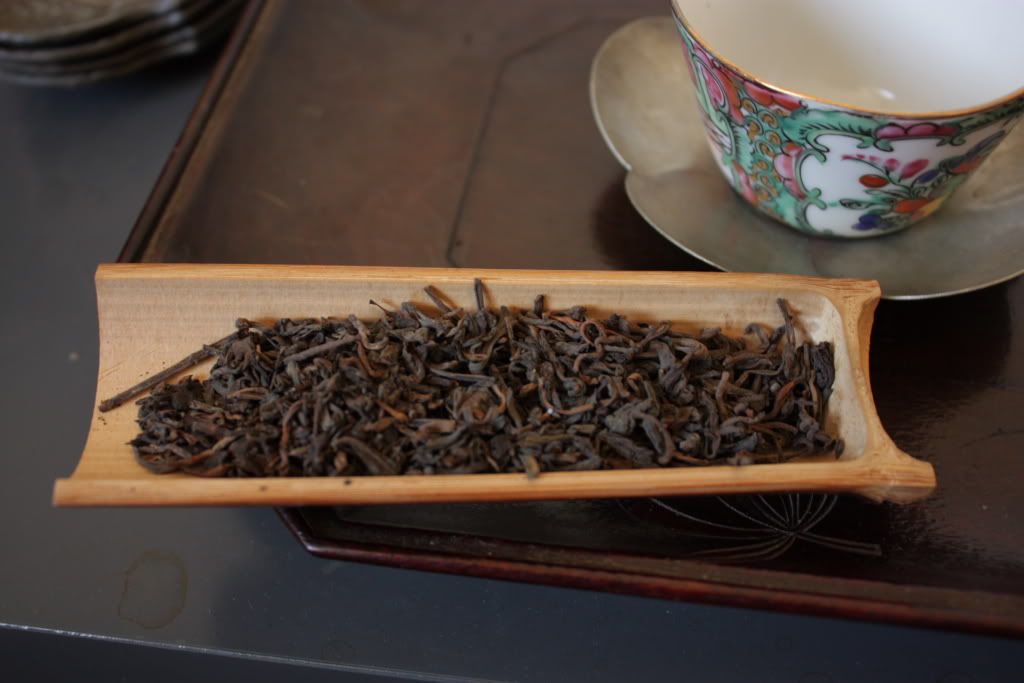They come in bags, jars, boxes, cases…. loose puerh come in all shape and sizes, and they are notoriously hard to identify if you are only looking at the dry leaves. What is this, for example?

Even without the problem of trying to identify a tea through pictures, loose puerh of all types are difficult to classify without a taste test. They all look the same, especially if they’ve been aged a bit through wet storage — dark, musty, with a fine coating of white sometimes, loose, usually broken, and nondescript. The telltale signs that you can use to identify cooked vs aged in a cake don’t work so well with loose, because they are not as obvious. Throw in the wet storage, and everything gets even harder.
It doesn’t help when you are dealing with the brewed version either

What, pray tell, is this anyway? Any number of combination of factors can give you this.
Wet leaves give you more of an answer

But even then, heavily wet stored tea, or border tea, can give you something that looks like this. Ultimately, it’s what goes in the mouth that counts, and from that I can pretty safely say this is a lightly wet stored cooked loose puerh. It has that mellowness that you only get with cooked tea — aged raw, even if heavily wet stored, doesn’t taste quite the same. Also, those tend to revert to a greener/browner complexion when brewed heavily, while this tea never did. The price is a confirmation of this: at $10 CDN/100g, it’s pretty cheap.
I got this as a sample and was asked to identify this “20 years Yiwu”. That already rings a few alarm bells — no such thing exists, not because Yiwu didn’t exist, but because back in 1989, Yiwu produced very little tea, and nobody paid attention to exactly where the tea was coming from — certainly not enough for a bag of tea to be able to trace its origins to the holiest of mountains. The leaves are quite broken, so there’s really not much you can tell from that. The price is far too cheap. Cheap things can be good, and expensive is no guarantee of quality, but known good things, such as a 20 years old Yiwu, is not likely to be knowing sold at a great discount.

 RSS - Posts
RSS - Posts
4 responses so far ↓
salserito // April 17, 2009 at 10:55 am |
Great post. Not only do you give us beautiful photos, but an instructive lesson as well! Thanks.
Anonymous // April 17, 2009 at 11:10 am |
It looks thick and tasty. $10/100g is pretty good for an aged drinkable shu. I wish I can find out where in Canada I can try some of this tea.
Thanks for the posts.
MarshalN // April 17, 2009 at 11:14 am |
@Salserito: Thanks 🙂
@joyfulwoogie: I believe it’s from somewhere in that oasis of English in Quebec, specifically, somewhere in that Chinatown. Exactly where though, I don’t know.
Anonymous // April 17, 2009 at 12:28 pm |
I’d like to mention that this tea has been stored (not sure for how long though) in glass jars in a very dry shop. What sort of impact do you think that might have had?